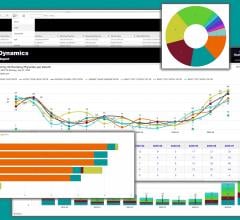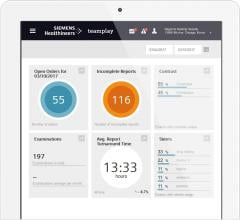
February 3, 2017 — Penn Medicine announced that its heart failure team is using big data to kick-start a project that is working to improve communication across the continuum of care, and ultimately reduce readmissions for heart failure patients.
“Identifying patients with heart failure might seem relatively straightforward, but it’s very tricky because a lot of their symptoms can be easily missed or misdiagnosed,” said Jo Anne Fante-Gallagher, MHA, BSN, RN, director of quality & safety for Heart & Vascular Serviceline. “Without the right communication protocols and identification methods, patients might come to the hospital, receive treatment and get discharged without ever being flagged as a heart failure patient, or receiving the proper care they need to manage their condition.”
Gallagher is part of the Penn Medicine Heart Failure Solution, a project that in 2014 pulled together a multidisciplinary group of clinicians and data scientists across the Hospital of the University of Pennsylvania, Pennsylvania Hospital, Chester County Hospital and Penn Presbyterian Medical Center. The project hopes to create an algorithm that could identify heart failure patients before they require surgery, or specialized emergency care.
The project has come a long way over the last two years; what started as an equation involving 30-some patient characteristics, has been whittled down to an almost exact science. Today, the algorithm has been worked out, beefed up, streamlined and ultimately turned into a whole new strategy for managing heart failure patients – now known as the WIRED strategy – and Penn Medicine said it is keeping them healthier and out of the hospital longer. But, as with many things worth doing, the path to success took some getting used to.
“Working with data scientists was an adjustment at first, definitely. Clinicians are hard-wired to look at facts and see in black and white. A patient needs surgery, or they don’t. But data science is all about the gray. It’s all about the uncertainty and the probability,” said Lee Goldberg, M.D., MPH, medical director of Penn’s Heart Failure and Transplantation Program, and director of the Penn Medicine Heart Failure Solution. “So it’s a shift in the mindset from ‘the patient either has heart failure or they don’t’ to ‘they likely have heart failure,’ and learning to be okay with that bit of uncertainty.”
When the team began development of their algorithm, they first identified several dozen characteristics and symptoms that might indicate heart failure. For example, was the patient given intravenous diuretics when they were admitted to the hospital? While there are a few reasons this could be necessary, Goldberg says most of the time it’s a good indication of heart failure. Previous hospitalizations for heart failure? That was on the list, too.
Once the team had a comprehensive list of characteristics that painted a picture that looked like most heart failure patients, data scientists began developing the algorithm.
In the beginning, as patients were examined, care teams would consider each of the different characteristics on their list. The more characteristics or symptoms a patient had, the more likely it was they had, or were headed for, heart failure. As the data began to pour in, the team fine-tuned the algorithm, weighing each of the elements higher or lower until they whittled it down to a list of only those that would most accurately predict heart failure patients.
“What we were left with were patients we could identify as at risk for heart failure as soon as they were admitted to the hospital,” Fante-Gallagher said. “From there, the team created an even more refined algorithm that allowed us to break the patients down into high-risk and low-risk. Any time a patient fitting the ‘high-risk’ profile was admitted, we could alert the care teams across our hospitals to make sure they were getting the care they needed. And that’s what we mean when we say our high-risk patients are ‘WIRED.’”
WIRED is the team’s new algorithm. But rather than working to identify heart failure patients, now they are working to make sure these high-risk patients are receiving the care they need across the continuum of care. It is the five essential things patients need if they have heart failure:
- Weight reconciliation: Making sure patients know how to properly weigh themselves, and clinicians know where to find the weight information in patient’s medical records;
- Information exchange: Making sure everyone knows where critical information lives, how to find it, and how to get it to the next provider;
- Reconciliation of medications: What medications is the patient taking, and are they the correct ones?;
- Education: About their disease, how to manage it, and necessary follow-up care; and
- Discharge: Does the patient understand their medication regimen? Who is guiding patient care next? Do they have or need follow-up care?
“These are the elements we need to be communicating with one another – whether it’s in an inpatient or outpatient setting, or at Penn Care at Home, or a nursing facility,” Goldberg said. “It started with data science working to identify the patients, but the entire project is ultimately about reducing readmissions for heart failure patients by increasing communication across the care team, soup to nuts.”
WIRED focuses on both patients and clinical teams. “It's getting the clinicians to recognize the symptoms, see the alerts, and say, ‘ah! heart failure.’ But it’s also about making sure patients understand what they need to do when they get home,” Goldberg said. “The five WIRED elements are now included in discharge information for heart failure patients, so the inpatient team is getting that information, but we also need to make sure we’re transmitting that to Penn Care at Home, or the provider who’s seeing them in the office for follow-up care next week.”
Though the team is still working on refining the WIRED process and getting the clinical teams on board, it seems with every step, their vision continues to grow.
“This algorithm has given us a whole new insight into what's going on compared to what we had in the past,” Fante-Gallagher said. “I think this program has blazed a trail, but has also validated the investment in data science because it's reaping rewards, but it’s also creating a new way of thinking. And someday, thanks to this algorithm, we're going to have an advanced model.”
Development on that third model has not yet begun, but the team already sees a possibility for a model that, based on patterns, would be able to identify patients who would benefit from heart transplant earlier in their treatment, before they become critically ill.
For now, the team is working on expanding the WIRED platform to patients who might otherwise slip through the cracks.
“We can make sure the high-risk patients in our hospitals are getting the WIRED formula, but what happens to those patients who come see us but are then readmitted to another hospital – maybe somewhere closer to home? We would never know,” said Fante-Gallagher, who recently partnered with Independence Blue Cross on a “data mash” of sorts to help identify these patients. “The partnership with IBC gives us access to data that’s outside our walls. So, if we're missing patients who need additional care simply because we didn’t know they were admitted somewhere else, incorporating payer data from Blue Cross into our model should help capture them. It’s just one more way that data science is helping us learn more so we can provide better care for our patients.”
For more information: www.pennmedicine.org


 February 15, 2022
February 15, 2022 








